 Facebook
Facebook
 X
X
 Instagram
Instagram
 TikTok
TikTok
 Youtube
Youtube
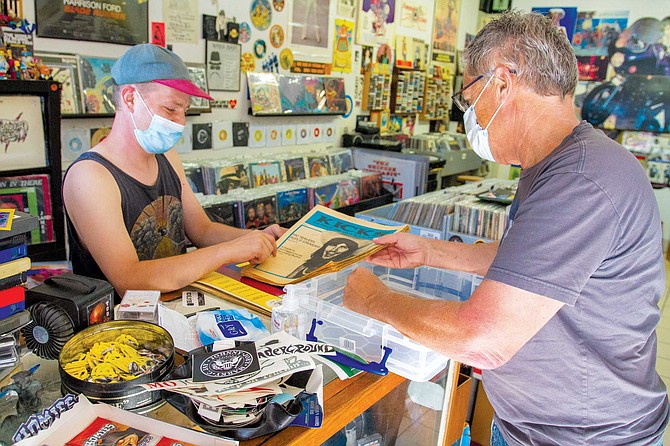
It’s a sweltering Saturday in August, oven hot, and I should be at the beach. Instead, I’m waiting in line to be allowed into Beat Box Records, a cool little used record store on Logan Avenue in Barrio Logan. Due to covid restrictions only two customers at a time were allowed inside.
I’m there to buy a slice of my past. Sixteen slices, actually: Mint condition copies of 16 of the 19 issues of Kicks: San Diego’s Rock ‘n’ roll Magazine, the monthly rock magazine I launched in 1979, when I was 21. A retro Channel 8 broadcast had sent me spiraling back in time, and I had spent an entire Sunday going through boxes in my garage, trying to find copies of Kicks. I used to have plenty, but someone broke into a storage locker and cleaned me out. I found just four copies.

I went on eBay, and found a guy selling nine copies for $3900. The next morning, the price had gone up to $9900. Later that day, I turned to Facebook, to a page for “Cool, Odd and Obscure San Diego Area Music,” to see if anyone had some copies of Kicks that they could spare.
Beat Box Records owner Bernie Fishman wrote back right away: he had picked up a collection from a dead guy and was happy to sell them to me for $12 apiece.
Bernie is slight and pasty and could pass for a Britpop rocker from the eighties. His store is a dream. It reminds me of one of those little used record stores I used to dive into when visiting Manhattan, back when Manhattan still had used record stores. Unlike most of the new record stores springing up around town to take advantage of the resurgence of interest in vinyl, Beat Box specializes in originals — those wonderful vinyl LPs from the 1960s and ’70s before barcodes and CDs. Once my turn comes to go in, I flip through a few records and promise myself to return one day soon, when it’s not so hot, to fill some holes in my own recently resurrected (from storage) vinyl library.
But on this infernal August Day, I’m on a mission: I want those Kicks. I hand Bernie my credit card. $192. They’re mine. I pop open my trunk and carefully lay them into an archival plastic storage box I purchased at Staples before my trip south from Carlsbad.
Remember the Cameron Crowe movie Almost Famous, about his life as a young rock journalist growing up in San Diego? I wasn’t quite as cool as Cameron, but almost.
A guy named Al Lutz and I were both 17 and working summer jobs at Sea World as stock clerks, slapping price stickers on baby Shamu plush toys and delivering them to the park’s various gift shops. We loved rock ‘n’ roll. I hung out at Arcade Music, the popular used record store at 7th and F in downtown San Diego, and would drive around to Licorice Pizza and Tower to pick up old copies of Billboard from some of the clerks I had befriended.
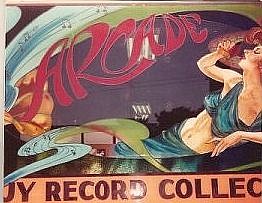
One day, in the Sea World stock warehouse, Al boasted that he was writing concert and record reviews for his high school newspaper and was getting free records in the mail from some of the record companies. I was amazed. Within weeks I had snagged my own column in the University of San Diego High School’s El Cid — two years after their prior rock critic, none other than Cameron Crowe, had graduated.
With partner Jim Greenwell, I wrote a column called “Kiai!” — we were both taking karate at the time — and got to know local concert promoters such as Dave Thayer of California Concerts, who gave us tickets to our very first rock show, America at the San Diego Sports Arena in May 1975. A short time later, Al started a little music magazine called Compendium and asked me to write for it. My first piece was an interview with KPRI deejay Adrian Boult. The magazine lasted only one or two issues.
When I started my freshman year at San Diego State in late summer 1976, I immediately found the Daily Aztec office and convinced the editor Dan McLain to give me a weekly rock column I called “In Your Ear.” The staff cartoonist drew a portrait of me for the column. I started getting recognized around campus. Best of all, I was getting hundreds of free records from the record companies, who all had college departments back then. I was in heaven. But the entertainment editor, whom McLain had bypassed when he offered me the job, hated me.

In addition to my weekly record review column, I reviewed concerts by everyone from Patti Smith to Iggy Pop. In March 1977, a few days after my 19th birthday, I was in the Daily Aztec office when a call came in for me from a publicist at ABC Records. She told me the Ramones, at the time an upstart punk band that had just released their second album, were coming to San Diego to play the Backdoor at San Diego State.
Their road manager was sick, she told me, so was there any way I could help out by picking up the band at the airport, getting them checked into their hotel, and making sure they got to their gig on time? Oh, and could I make sure they were fed, as well?
And so it was that I drove to the airport in my mom’s 1965 Chevy Impala to pick up the four original Ramones. I took them to a seedy motel on El Cajon Boulevard, the name of which I can’t recall, and then to a nearby Jack-in-the-Box for tacos. (Years later, Tommy Ramone would remark that this was the band’s very first taste of “Mexican food.”) We went back to the hotel, where I watched Joey Ramone inhale steam. (“It’s for my voice,” he told me.) I drove the band to the Backdoor, hustling to get them to the gig on time. There were two shows that night. Between shows we went back to the hotel for more steam for Joey.
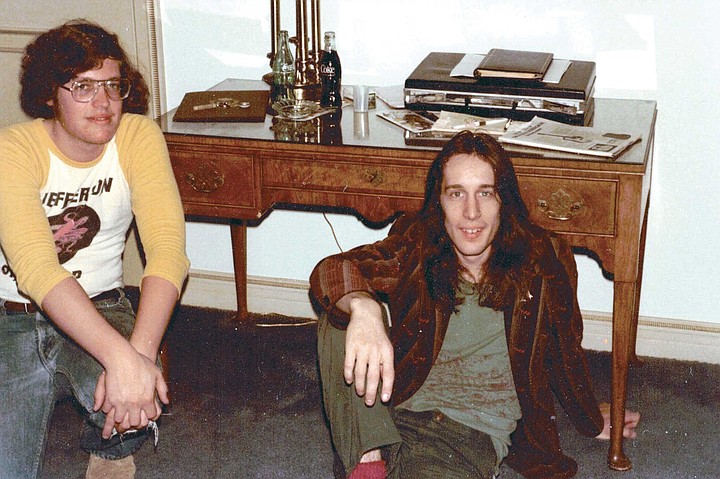
As an Aztec reporter, I got to hang out with three of the five original Byrds, and I still treasure the “greatest hits” album I got them to sign. I was right up front by the stage for Roxy Music’s show at Montezuma Hall. I saw Iggy Pop when David Bowie was quietly playing keyboards in his band. And I got an earful of rage from Billy Joel’s first wife, Elizabeth Weber, after I wrote a scathing review of his breakout album The Stranger.
After a changing of the guard at the Daily Aztec, I lost my weekly record review column in December 1977 and was no longer the sole reporter assigned to review records or concerts. Around the same time, I happened to see a magazine from the Bay Area called BAM (for Bay Area Music), a free monthly magazine that covered rock ‘n’ roll in general as well as the local music scene. I vowed to do something similar here in San Diego.
In the summer of 1978, I moved back in with my parents in Point Loma. That summer, I began making plans for Kicks: San Diego’s Only Rock ‘n’ roll Magazine, named after the song “Kicks” by Paul Revere and the Raiders, with a tag line lifted from Creem: America’s Only Rock ‘n’ roll Magazine.
I lined up Albert Carrasco, a fellow Aztec reporter and former roommate, and David Hakola, the general manager of Arcade Music. We drafted our idea: Kicks would be a free monthly magazine, funded through the sale of advertisements, with a split focus on the national and local music scenes.
I had become production editor of the Daily Aztec and learned about layout. I volunteered to proof pages at Mercury Graphics, where the Aztec was typeset and pasted up. In those days, articles had to be typed into a machine called the Mergenthaler, which spit them out in columns on long glossy sheets of photo paper.
These “galleys,” as they were called, then had to be cut up by hand, waxed on the back, and pasted to a grid sheet tacked onto a “light table” — a box with an opaque glass top over a couple of light bulbs. The light was so you could see the grid lines. Photos, too, had to be “screened” into “halftones” — a reprographic technique that simulates continuous-tone imagery through the use of dots of various size and spacing to create a gradient effect.
We got to work in January 1979. I took out a business license as In Your Ear Productions and ran “fictitious name” ads in a local newspaper to make the new name stick. I opened a bank account, with money I had earned from freelancing for Billboard magazine and the Los Angeles Times’ newly launched San Diego County Edition, as well as from the sale of discontinued record albums known as “cutouts” I’d pick up at the Wherehouse or Licorice Pizza for 19 cents, 39 cents, or 79 cents, then sell for a buck apiece to Arcade Music. I installed a dedicated phone line in my bedroom and, using a logo designed by Daily Aztec editorial cartoonist Chuck McPherson, ordered letterhead, envelopes, and business cards.

Then we set about fine-tuning our idea, with input from several new additions to our unpaid staff, including Gaile Ross, who worked with Dave at Arcade Music, as office manager; and Deborah Krolzick, who worked at Mercury, as our copy editor. We crafted a mission statement: “Kicks: San Diego’s Only Rock ‘n’ roll Magazine is a controlled circulation monthly promoting the growth and development of rock ‘n’ roll music in San Diego.”
We decided that each monthly issue of Kicks would be anchored by a cover story, ideally an interview with a big-name rock band that happened to be in town, so we could interview them in person and get photos as well. We also decided to have a news section, divided into national and local segments; album reviews; a calendar of upcoming concerts; a listing of live music at clubs, and a free musicians’ classified section.
Next came the logistics. We decided on a press run of 20,000, distributed free each month at local music stores, record shops, and other businesses. Mercury Graphics would do our typesetting, while Albert and I would do our own layout and “paste-up” on a light table I built myself. San Dieguito Publishers, the Encinitas-based publisher of the San Dieguito Citizen newspaper — and the Daily Aztec — would be our printer.
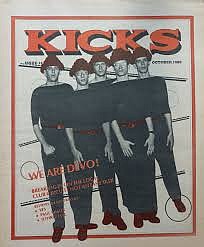
Then we drew up a budget. Printing 20,000 copies of a 20-page magazine — 11-by-14 inches, on 30-pound newsprint — would run around $1000, with additional charges for halftones and other production work. Typesetting would add another $300 or $400. And we needed to rent an office. My parents were growing tired of sharing their home with a bunch of young rockers. All in, we figured our monthly expenses at around $3000, money that came from my savings. For revenue, we would sell advertising, topping out at a one-time cost of $385 for a full page ad ($325 per ad, if the client signed a year-long contract).
Throughout the spring, we lined up additional staffers, all of whom agreed to work for free until we were able to pay them. J. Michael Snell came on as advertising director, although before our first issue came out he was replaced by David Thomas Parry, a very proper type who always wore suits and drove a 1972 Cadillac Sedan de Ville. He was constantly telling us not to get fingerprints on it. Doug Thomas helped us distribute the magazine. Tim Griswald, Krista Heron and, later, Nick Nacca came onboard as photographers. Bart Mendoza, a young kid who played in a band (Manual Scan, a Who-like power pop band still playing locally today), was brought on to compile our calendar.
I had a sweet young graphic assistant who quit after she was almost raped. We were laying out our first issue in our tiny basement office on Harbor Drive just south of Scott Street in Point Loma. It was dark. Still clutching the X-acto knife I was using to cut and paste copy, I ran to a nearby liquor store for some cheap fortified wine and some Slim Jims.
Returning to the office, I heard a piercing scream and saw a man had grabbed my assistant. I held out my knife and yelled and he took off, almost colliding with me on his way out of the office. She was traumatized. We called the police and filed a report. She went home; I went back to work, finishing up our issue. Within a week or two, I had found a new office, on Carleton Street, just off Shelter Island.

The first issue of Kicks: San Diego’s Only Rock ‘n’ roll Magazine hit the streets in late August 1979, with a September cover date. It featured a cover photo of Blue Oyster Cult, snapped during a backstage photo shoot by Tim Griswald during the rock band’s July concert at San Diego Stadium, headlining over Cheap Trick, UFO, and Pat Travers. Albert Carrasco had interviewed Allen Lanier, the band’s keyboardist and rhythm guitarist, for the accompanying article.
For our first issue, our total printing cost was $1090, and Mercury gave us a hefty discount for typesetting, charging us just $159, half the regular charge. After factoring in other expenses such as rent, phone, our answering service, and gasoline, we essentially broke even. Ad sales for the month clocked in at $1853.80. We had sold a total of 14 ads for our first issue, ranging from $50 eighth-pagers purchased by Buck’s Ticket Service, Trip Tickets, the Catamaran, the Roxy Theater, and concert promoter Mike Fahn, to $350 for a full-page ad bought by Tower Records.
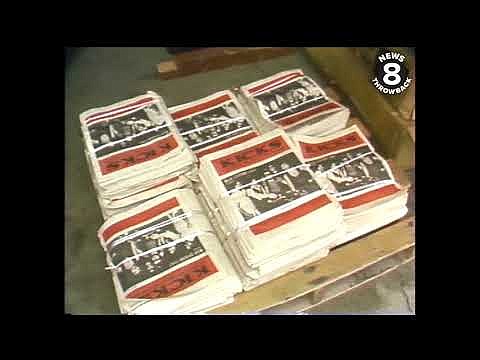
People noticed. We cut a deal with two local rock radio stations — KPRI and Magic 91 (which years later would become 91X) — for Kicks commercials. We traded advertising to Michael Pieratt at the San Diego Sports Arena in return for a billboard. We ran small ads in high school papers, the local punk fanzine Quasi Substitute, and the PR industry magazine The Communicator. We also generated quite a bit of press, including flattering articles in both the San Diego Union and Evening Tribune. For the Tribune photo shoot, I wore my best Angels Flight disco suit. White.
Our October issue, with Pat Travers on the cover, brought in $1914.72 in ad sales and marked the first appearance of fabled local concert promoter Marc Berman. In November, we generated just $1670.30, but it’s probably my favorite issue because it marked the start of “The History of San Diego Rock ‘n’ roll,” a five-part series written by Steve Thorn, a local rock historian who today is a college professor.
In the meantime, we had lined up more writers, including George Varga, who went on to a long run as pop music critic for the San Diego Union and Union-Tribune; Barry Alfonso; and Clyde Hadlock, a brilliant writer who had penned several reviews for Creem.

I became increasingly neurotic about the magazine’s quality. Twice, I stopped the presses while I was scanning a proof of our November issue inside the press room and came across typos.
For our December issue, in which David Byrne of the Talking Heads was our cover story, we rallied and generated a whopping $3583.90. The issue included a photo page of the Ramones at the San Diego Zoo. The punk band had been back in town for a gig with new drummer Marky Ramone.
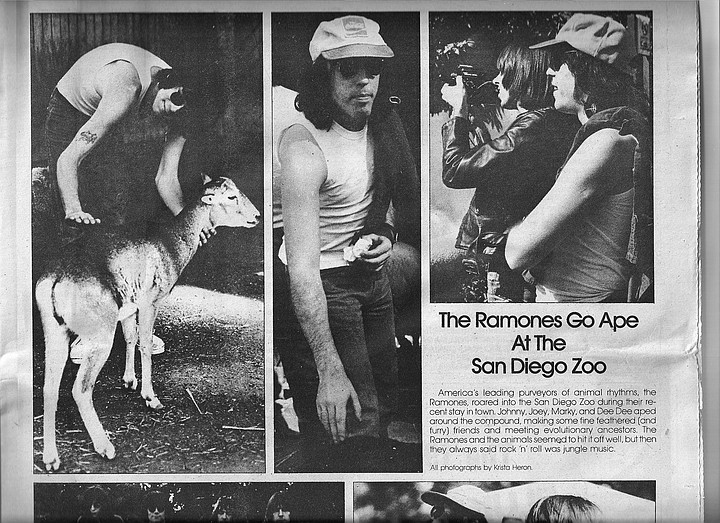
We had remained in touch since my first encounter at San Diego State three years earlier, and their road manager called me up and said they had a free day and wanted to know what they should do. I suggested the San Diego Zoo. I brought along photographer Krista Heron and we had a most interesting day — culminating in me breaking up a fight when Johnny told Joey the komodo dragon looked like him. Offended, Joey snarled, “He does not” and pushed the guitarist, who by then had secured a reputation as an asshole (although he had always been nice to me).
Unfortunately, our December 1979 ad sales tally was the most we ever made from a single issue. Regardless, I kept expanding the magazine in both page size and circulation, and by June 1980 our printing bill had ballooned to $2800 while our typesetting was now being done in Hillcrest at Eucalyptus Graphics — Mercury Graphics had folded — for upwards of $600 a month. In the meantime, we continued to put famous as well as up-and-coming rock stars on our cover.
We featured Todd Rundgren and Utopia in January 1980, Rick Derringer in February, Pat Benatar in March, Jefferson Starship in April, Soviet band Black Russian in May, and Rachel Sweet in June.
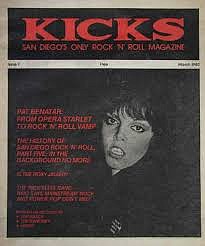
For our September 1980 issue, we put Dave Hakola’s one-year-old son on the cover. On August 19, we held a first anniversary party at the Journey, an under-21 nightclub at 5375 Kearny Villa Road. (The location is now a strip mall home to nail salons and the like.) Bill Silva, at the time an upstart concert promoter who would later manage Grammy Award winner Jason Mraz for nearly 20 years, was the volunteer bartender.
One of the bands that played that night was Fingers, a post-punk “power pop” band fronted by Joey Harris, later the singer and guitarist for the Beat Farmers, and featuring songwriter Paul Kamanski (Comanche Moon, Snuggle Bunnies), who wrote several of the songs that got the Beat Farmers signed to MCA Records and booked on the Dave Letterman show.
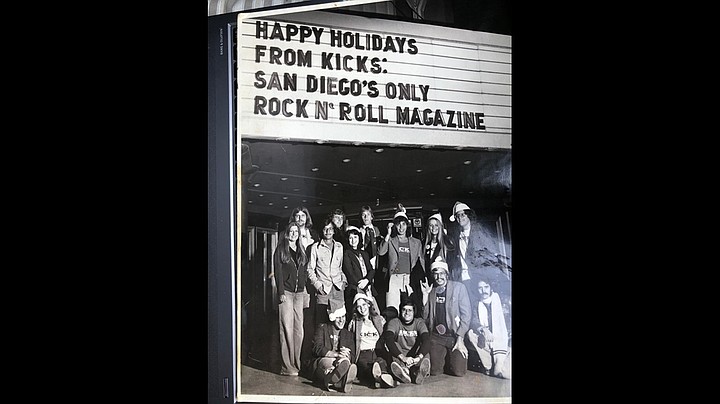
Over the summer of 1980, we welcomed a new volunteer member to our staff: Gary Puckett, the famed 1960s pop star behind such huge Top 40 hits as “Woman, Woman,” “Young Girl,” “Lady Willpower,” and “Over You.” After Gary and his band The Union Gap parted ways in the early 1970s, his solo career did not take off as he had hoped and he was dropped by his label, Columbia Records. He studied acting and dance and made a movie in the Philippines. When he returned to San Diego — he had grown up in Vista — in the hopes of resurrecting his musical career, he basically had to start all over.

In December 1978, he had taken up residence at the Anchorage Fish Company on La Jolla Boulevard with a guitarist, performing as a duo and concentrating on contemporary Top 40 hits like Exile’s “Kiss You All Over” and Rod Stewart’s “Do Ya Think I’m Sexy?” as well as his own past hits. By the spring of 1979, the duo had expanded into a band that included Puckett’s two brothers on keyboards and drums.
I wrote a story on Puckett for the Los Angeles Times that was published shortly before the debut of Kicks and we became friends. Puckett later went on tour, but returned to the local club scene in January 1980, this time at Boom Trenchard’s Flare Path on Pacific Coast Highway, next to Lindbergh Field. We resumed our friendship. Since he lived in Cardiff, in a $400-a-month townhouse, I asked him to once a month pick up our page proofs from the printer in Solana Beach and run them by our office on the way to his gig. Gary obliged.
Albert left shortly after our anniversary party, and Kicks brought in a new managing editor, Joel Dinerstein, and a art director named Ted Meyer who created a new logo and upped the quality of our design and layout. But the growth in revenues I had hoped for never materialized, hampered largely by the onset of a two-year recession and by the failure of several advertisers to pay their bills.
Even so, I added pages — at our peak, we were 36 — and expanded distribution to 25,000, 30,000 and, ultimately, 35,000 copies, confident that a higher press run would lead to more advertising. But I was losing money, and I became increasingly difficult to work with.
In the early fall of 1980 I stiffed our printer — sorry, Richard Lapham, if you are still with us — and went over to North Coast Publishers. David Thomas Parry left us. I hung on for another few months, but then Gary Puckett asked me to manage his comeback and I jumped.
After the March 1981 issue of Kicks, I handed the magazine over to my former partner, Albert Carrasco, and focused on putting together a new band for Gary (whom I ended up booking for a three-week engagement in Las Vegas).
Albert sat out April and completely redesigned the magazine, with a glossy color cover. It lasted two more issues and then it died. Kicks was history.


It’s a sweltering Saturday in August, oven hot, and I should be at the beach. Instead, I’m waiting in line to be allowed into Beat Box Records, a cool little used record store on Logan Avenue in Barrio Logan. Due to covid restrictions only two customers at a time were allowed inside.
I’m there to buy a slice of my past. Sixteen slices, actually: Mint condition copies of 16 of the 19 issues of Kicks: San Diego’s Rock ‘n’ roll Magazine, the monthly rock magazine I launched in 1979, when I was 21. A retro Channel 8 broadcast had sent me spiraling back in time, and I had spent an entire Sunday going through boxes in my garage, trying to find copies of Kicks. I used to have plenty, but someone broke into a storage locker and cleaned me out. I found just four copies.

I went on eBay, and found a guy selling nine copies for $3900. The next morning, the price had gone up to $9900. Later that day, I turned to Facebook, to a page for “Cool, Odd and Obscure San Diego Area Music,” to see if anyone had some copies of Kicks that they could spare.
Beat Box Records owner Bernie Fishman wrote back right away: he had picked up a collection from a dead guy and was happy to sell them to me for $12 apiece.
Bernie is slight and pasty and could pass for a Britpop rocker from the eighties. His store is a dream. It reminds me of one of those little used record stores I used to dive into when visiting Manhattan, back when Manhattan still had used record stores. Unlike most of the new record stores springing up around town to take advantage of the resurgence of interest in vinyl, Beat Box specializes in originals — those wonderful vinyl LPs from the 1960s and ’70s before barcodes and CDs. Once my turn comes to go in, I flip through a few records and promise myself to return one day soon, when it’s not so hot, to fill some holes in my own recently resurrected (from storage) vinyl library.
But on this infernal August Day, I’m on a mission: I want those Kicks. I hand Bernie my credit card. $192. They’re mine. I pop open my trunk and carefully lay them into an archival plastic storage box I purchased at Staples before my trip south from Carlsbad.
Remember the Cameron Crowe movie Almost Famous, about his life as a young rock journalist growing up in San Diego? I wasn’t quite as cool as Cameron, but almost.
A guy named Al Lutz and I were both 17 and working summer jobs at Sea World as stock clerks, slapping price stickers on baby Shamu plush toys and delivering them to the park’s various gift shops. We loved rock ‘n’ roll. I hung out at Arcade Music, the popular used record store at 7th and F in downtown San Diego, and would drive around to Licorice Pizza and Tower to pick up old copies of Billboard from some of the clerks I had befriended.

One day, in the Sea World stock warehouse, Al boasted that he was writing concert and record reviews for his high school newspaper and was getting free records in the mail from some of the record companies. I was amazed. Within weeks I had snagged my own column in the University of San Diego High School’s El Cid — two years after their prior rock critic, none other than Cameron Crowe, had graduated.
With partner Jim Greenwell, I wrote a column called “Kiai!” — we were both taking karate at the time — and got to know local concert promoters such as Dave Thayer of California Concerts, who gave us tickets to our very first rock show, America at the San Diego Sports Arena in May 1975. A short time later, Al started a little music magazine called Compendium and asked me to write for it. My first piece was an interview with KPRI deejay Adrian Boult. The magazine lasted only one or two issues.
When I started my freshman year at San Diego State in late summer 1976, I immediately found the Daily Aztec office and convinced the editor Dan McLain to give me a weekly rock column I called “In Your Ear.” The staff cartoonist drew a portrait of me for the column. I started getting recognized around campus. Best of all, I was getting hundreds of free records from the record companies, who all had college departments back then. I was in heaven. But the entertainment editor, whom McLain had bypassed when he offered me the job, hated me.

In addition to my weekly record review column, I reviewed concerts by everyone from Patti Smith to Iggy Pop. In March 1977, a few days after my 19th birthday, I was in the Daily Aztec office when a call came in for me from a publicist at ABC Records. She told me the Ramones, at the time an upstart punk band that had just released their second album, were coming to San Diego to play the Backdoor at San Diego State.
Their road manager was sick, she told me, so was there any way I could help out by picking up the band at the airport, getting them checked into their hotel, and making sure they got to their gig on time? Oh, and could I make sure they were fed, as well?
And so it was that I drove to the airport in my mom’s 1965 Chevy Impala to pick up the four original Ramones. I took them to a seedy motel on El Cajon Boulevard, the name of which I can’t recall, and then to a nearby Jack-in-the-Box for tacos. (Years later, Tommy Ramone would remark that this was the band’s very first taste of “Mexican food.”) We went back to the hotel, where I watched Joey Ramone inhale steam. (“It’s for my voice,” he told me.) I drove the band to the Backdoor, hustling to get them to the gig on time. There were two shows that night. Between shows we went back to the hotel for more steam for Joey.

As an Aztec reporter, I got to hang out with three of the five original Byrds, and I still treasure the “greatest hits” album I got them to sign. I was right up front by the stage for Roxy Music’s show at Montezuma Hall. I saw Iggy Pop when David Bowie was quietly playing keyboards in his band. And I got an earful of rage from Billy Joel’s first wife, Elizabeth Weber, after I wrote a scathing review of his breakout album The Stranger.
After a changing of the guard at the Daily Aztec, I lost my weekly record review column in December 1977 and was no longer the sole reporter assigned to review records or concerts. Around the same time, I happened to see a magazine from the Bay Area called BAM (for Bay Area Music), a free monthly magazine that covered rock ‘n’ roll in general as well as the local music scene. I vowed to do something similar here in San Diego.
In the summer of 1978, I moved back in with my parents in Point Loma. That summer, I began making plans for Kicks: San Diego’s Only Rock ‘n’ roll Magazine, named after the song “Kicks” by Paul Revere and the Raiders, with a tag line lifted from Creem: America’s Only Rock ‘n’ roll Magazine.
I lined up Albert Carrasco, a fellow Aztec reporter and former roommate, and David Hakola, the general manager of Arcade Music. We drafted our idea: Kicks would be a free monthly magazine, funded through the sale of advertisements, with a split focus on the national and local music scenes.
I had become production editor of the Daily Aztec and learned about layout. I volunteered to proof pages at Mercury Graphics, where the Aztec was typeset and pasted up. In those days, articles had to be typed into a machine called the Mergenthaler, which spit them out in columns on long glossy sheets of photo paper.
These “galleys,” as they were called, then had to be cut up by hand, waxed on the back, and pasted to a grid sheet tacked onto a “light table” — a box with an opaque glass top over a couple of light bulbs. The light was so you could see the grid lines. Photos, too, had to be “screened” into “halftones” — a reprographic technique that simulates continuous-tone imagery through the use of dots of various size and spacing to create a gradient effect.
We got to work in January 1979. I took out a business license as In Your Ear Productions and ran “fictitious name” ads in a local newspaper to make the new name stick. I opened a bank account, with money I had earned from freelancing for Billboard magazine and the Los Angeles Times’ newly launched San Diego County Edition, as well as from the sale of discontinued record albums known as “cutouts” I’d pick up at the Wherehouse or Licorice Pizza for 19 cents, 39 cents, or 79 cents, then sell for a buck apiece to Arcade Music. I installed a dedicated phone line in my bedroom and, using a logo designed by Daily Aztec editorial cartoonist Chuck McPherson, ordered letterhead, envelopes, and business cards.

Then we set about fine-tuning our idea, with input from several new additions to our unpaid staff, including Gaile Ross, who worked with Dave at Arcade Music, as office manager; and Deborah Krolzick, who worked at Mercury, as our copy editor. We crafted a mission statement: “Kicks: San Diego’s Only Rock ‘n’ roll Magazine is a controlled circulation monthly promoting the growth and development of rock ‘n’ roll music in San Diego.”
We decided that each monthly issue of Kicks would be anchored by a cover story, ideally an interview with a big-name rock band that happened to be in town, so we could interview them in person and get photos as well. We also decided to have a news section, divided into national and local segments; album reviews; a calendar of upcoming concerts; a listing of live music at clubs, and a free musicians’ classified section.
Next came the logistics. We decided on a press run of 20,000, distributed free each month at local music stores, record shops, and other businesses. Mercury Graphics would do our typesetting, while Albert and I would do our own layout and “paste-up” on a light table I built myself. San Dieguito Publishers, the Encinitas-based publisher of the San Dieguito Citizen newspaper — and the Daily Aztec — would be our printer.

Then we drew up a budget. Printing 20,000 copies of a 20-page magazine — 11-by-14 inches, on 30-pound newsprint — would run around $1000, with additional charges for halftones and other production work. Typesetting would add another $300 or $400. And we needed to rent an office. My parents were growing tired of sharing their home with a bunch of young rockers. All in, we figured our monthly expenses at around $3000, money that came from my savings. For revenue, we would sell advertising, topping out at a one-time cost of $385 for a full page ad ($325 per ad, if the client signed a year-long contract).
Throughout the spring, we lined up additional staffers, all of whom agreed to work for free until we were able to pay them. J. Michael Snell came on as advertising director, although before our first issue came out he was replaced by David Thomas Parry, a very proper type who always wore suits and drove a 1972 Cadillac Sedan de Ville. He was constantly telling us not to get fingerprints on it. Doug Thomas helped us distribute the magazine. Tim Griswald, Krista Heron and, later, Nick Nacca came onboard as photographers. Bart Mendoza, a young kid who played in a band (Manual Scan, a Who-like power pop band still playing locally today), was brought on to compile our calendar.
I had a sweet young graphic assistant who quit after she was almost raped. We were laying out our first issue in our tiny basement office on Harbor Drive just south of Scott Street in Point Loma. It was dark. Still clutching the X-acto knife I was using to cut and paste copy, I ran to a nearby liquor store for some cheap fortified wine and some Slim Jims.
Returning to the office, I heard a piercing scream and saw a man had grabbed my assistant. I held out my knife and yelled and he took off, almost colliding with me on his way out of the office. She was traumatized. We called the police and filed a report. She went home; I went back to work, finishing up our issue. Within a week or two, I had found a new office, on Carleton Street, just off Shelter Island.

The first issue of Kicks: San Diego’s Only Rock ‘n’ roll Magazine hit the streets in late August 1979, with a September cover date. It featured a cover photo of Blue Oyster Cult, snapped during a backstage photo shoot by Tim Griswald during the rock band’s July concert at San Diego Stadium, headlining over Cheap Trick, UFO, and Pat Travers. Albert Carrasco had interviewed Allen Lanier, the band’s keyboardist and rhythm guitarist, for the accompanying article.
For our first issue, our total printing cost was $1090, and Mercury gave us a hefty discount for typesetting, charging us just $159, half the regular charge. After factoring in other expenses such as rent, phone, our answering service, and gasoline, we essentially broke even. Ad sales for the month clocked in at $1853.80. We had sold a total of 14 ads for our first issue, ranging from $50 eighth-pagers purchased by Buck’s Ticket Service, Trip Tickets, the Catamaran, the Roxy Theater, and concert promoter Mike Fahn, to $350 for a full-page ad bought by Tower Records.

People noticed. We cut a deal with two local rock radio stations — KPRI and Magic 91 (which years later would become 91X) — for Kicks commercials. We traded advertising to Michael Pieratt at the San Diego Sports Arena in return for a billboard. We ran small ads in high school papers, the local punk fanzine Quasi Substitute, and the PR industry magazine The Communicator. We also generated quite a bit of press, including flattering articles in both the San Diego Union and Evening Tribune. For the Tribune photo shoot, I wore my best Angels Flight disco suit. White.
Our October issue, with Pat Travers on the cover, brought in $1914.72 in ad sales and marked the first appearance of fabled local concert promoter Marc Berman. In November, we generated just $1670.30, but it’s probably my favorite issue because it marked the start of “The History of San Diego Rock ‘n’ roll,” a five-part series written by Steve Thorn, a local rock historian who today is a college professor.
In the meantime, we had lined up more writers, including George Varga, who went on to a long run as pop music critic for the San Diego Union and Union-Tribune; Barry Alfonso; and Clyde Hadlock, a brilliant writer who had penned several reviews for Creem.

I became increasingly neurotic about the magazine’s quality. Twice, I stopped the presses while I was scanning a proof of our November issue inside the press room and came across typos.
For our December issue, in which David Byrne of the Talking Heads was our cover story, we rallied and generated a whopping $3583.90. The issue included a photo page of the Ramones at the San Diego Zoo. The punk band had been back in town for a gig with new drummer Marky Ramone.

We had remained in touch since my first encounter at San Diego State three years earlier, and their road manager called me up and said they had a free day and wanted to know what they should do. I suggested the San Diego Zoo. I brought along photographer Krista Heron and we had a most interesting day — culminating in me breaking up a fight when Johnny told Joey the komodo dragon looked like him. Offended, Joey snarled, “He does not” and pushed the guitarist, who by then had secured a reputation as an asshole (although he had always been nice to me).
Unfortunately, our December 1979 ad sales tally was the most we ever made from a single issue. Regardless, I kept expanding the magazine in both page size and circulation, and by June 1980 our printing bill had ballooned to $2800 while our typesetting was now being done in Hillcrest at Eucalyptus Graphics — Mercury Graphics had folded — for upwards of $600 a month. In the meantime, we continued to put famous as well as up-and-coming rock stars on our cover.
We featured Todd Rundgren and Utopia in January 1980, Rick Derringer in February, Pat Benatar in March, Jefferson Starship in April, Soviet band Black Russian in May, and Rachel Sweet in June.

For our September 1980 issue, we put Dave Hakola’s one-year-old son on the cover. On August 19, we held a first anniversary party at the Journey, an under-21 nightclub at 5375 Kearny Villa Road. (The location is now a strip mall home to nail salons and the like.) Bill Silva, at the time an upstart concert promoter who would later manage Grammy Award winner Jason Mraz for nearly 20 years, was the volunteer bartender.
One of the bands that played that night was Fingers, a post-punk “power pop” band fronted by Joey Harris, later the singer and guitarist for the Beat Farmers, and featuring songwriter Paul Kamanski (Comanche Moon, Snuggle Bunnies), who wrote several of the songs that got the Beat Farmers signed to MCA Records and booked on the Dave Letterman show.

Over the summer of 1980, we welcomed a new volunteer member to our staff: Gary Puckett, the famed 1960s pop star behind such huge Top 40 hits as “Woman, Woman,” “Young Girl,” “Lady Willpower,” and “Over You.” After Gary and his band The Union Gap parted ways in the early 1970s, his solo career did not take off as he had hoped and he was dropped by his label, Columbia Records. He studied acting and dance and made a movie in the Philippines. When he returned to San Diego — he had grown up in Vista — in the hopes of resurrecting his musical career, he basically had to start all over.

In December 1978, he had taken up residence at the Anchorage Fish Company on La Jolla Boulevard with a guitarist, performing as a duo and concentrating on contemporary Top 40 hits like Exile’s “Kiss You All Over” and Rod Stewart’s “Do Ya Think I’m Sexy?” as well as his own past hits. By the spring of 1979, the duo had expanded into a band that included Puckett’s two brothers on keyboards and drums.
I wrote a story on Puckett for the Los Angeles Times that was published shortly before the debut of Kicks and we became friends. Puckett later went on tour, but returned to the local club scene in January 1980, this time at Boom Trenchard’s Flare Path on Pacific Coast Highway, next to Lindbergh Field. We resumed our friendship. Since he lived in Cardiff, in a $400-a-month townhouse, I asked him to once a month pick up our page proofs from the printer in Solana Beach and run them by our office on the way to his gig. Gary obliged.
Albert left shortly after our anniversary party, and Kicks brought in a new managing editor, Joel Dinerstein, and a art director named Ted Meyer who created a new logo and upped the quality of our design and layout. But the growth in revenues I had hoped for never materialized, hampered largely by the onset of a two-year recession and by the failure of several advertisers to pay their bills.
Even so, I added pages — at our peak, we were 36 — and expanded distribution to 25,000, 30,000 and, ultimately, 35,000 copies, confident that a higher press run would lead to more advertising. But I was losing money, and I became increasingly difficult to work with.
In the early fall of 1980 I stiffed our printer — sorry, Richard Lapham, if you are still with us — and went over to North Coast Publishers. David Thomas Parry left us. I hung on for another few months, but then Gary Puckett asked me to manage his comeback and I jumped.
After the March 1981 issue of Kicks, I handed the magazine over to my former partner, Albert Carrasco, and focused on putting together a new band for Gary (whom I ended up booking for a three-week engagement in Las Vegas).
Albert sat out April and completely redesigned the magazine, with a glossy color cover. It lasted two more issues and then it died. Kicks was history.
Comments